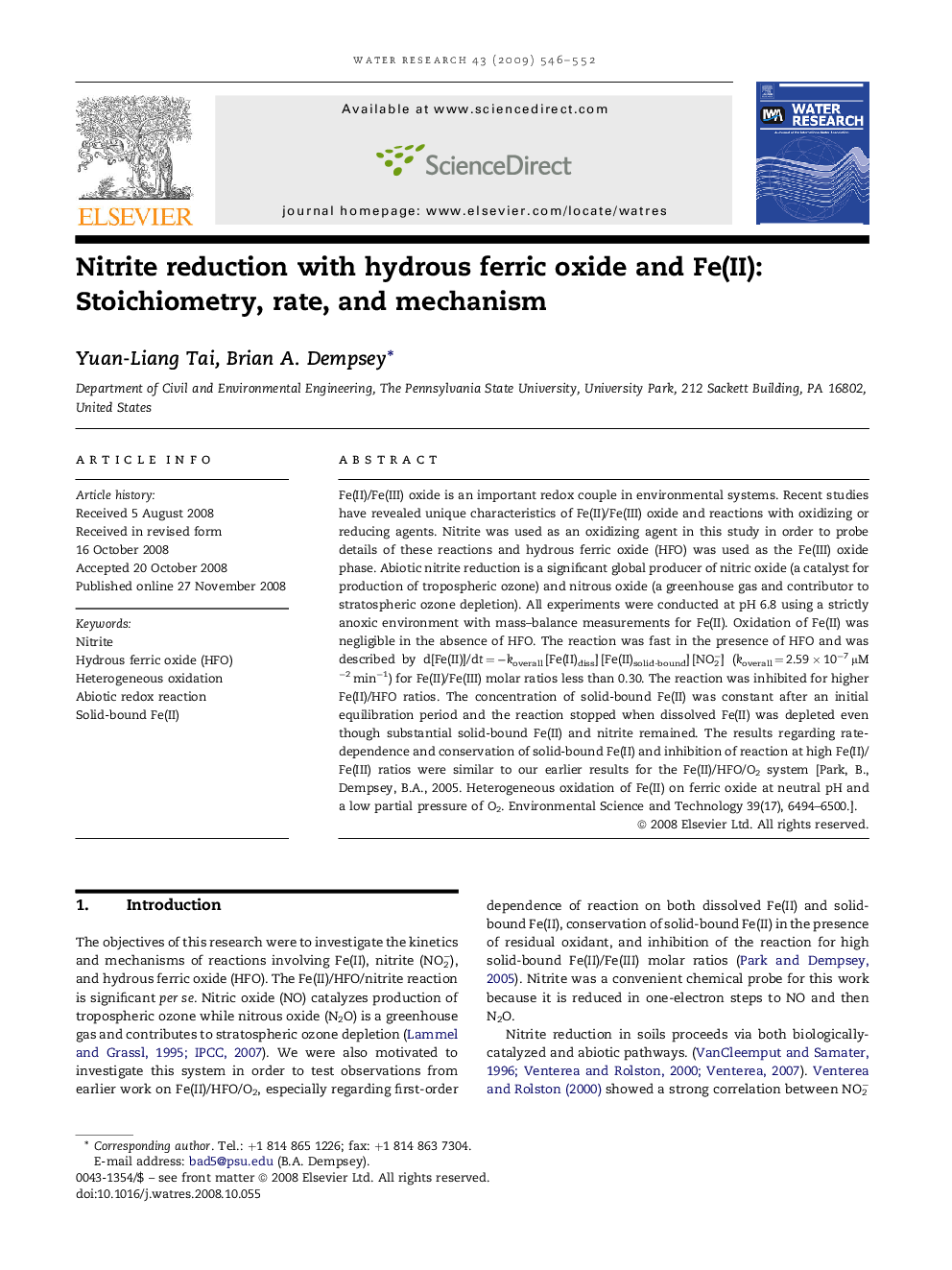| Article ID | Journal | Published Year | Pages | File Type |
|---|---|---|---|---|
| 4484455 | Water Research | 2009 | 7 Pages |
Fe(II)/Fe(III) oxide is an important redox couple in environmental systems. Recent studies have revealed unique characteristics of Fe(II)/Fe(III) oxide and reactions with oxidizing or reducing agents. Nitrite was used as an oxidizing agent in this study in order to probe details of these reactions and hydrous ferric oxide (HFO) was used as the Fe(III) oxide phase. Abiotic nitrite reduction is a significant global producer of nitric oxide (a catalyst for production of tropospheric ozone) and nitrous oxide (a greenhouse gas and contributor to stratospheric ozone depletion). All experiments were conducted at pH 6.8 using a strictly anoxic environment with mass–balance measurements for Fe(II). Oxidation of Fe(II) was negligible in the absence of HFO. The reaction was fast in the presence of HFO and was described by d[Fe(II)]/dt = −koverall [Fe(II)diss] [Fe(II)solid-bound] [NO2−] (koverall = 2.59 × 10−7 μM−2 min−1) for Fe(II)/Fe(III) molar ratios less than 0.30. The reaction was inhibited for higher Fe(II)/HFO ratios. The concentration of solid-bound Fe(II) was constant after an initial equilibration period and the reaction stopped when dissolved Fe(II) was depleted even though substantial solid-bound Fe(II) and nitrite remained. The results regarding rate-dependence and conservation of solid-bound Fe(II) and inhibition of reaction at high Fe(II)/Fe(III) ratios were similar to our earlier results for the Fe(II)/HFO/O2 system [Park, B., Dempsey, B.A., 2005. Heterogeneous oxidation of Fe(II) on ferric oxide at neutral pH and a low partial pressure of O2. Environmental Science and Technology 39(17), 6494–6500.].
